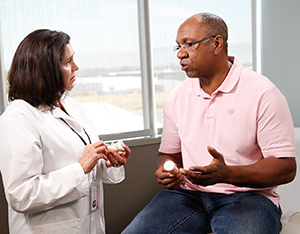Discharge Instructions for Aortic Valve Stenosis
Discharge Instructions for Aortic Valve Stenosis

Home care
Check with your doctor before taking any over-the-counter medicines, herbal products, or vitamins.
Take your medicines exactly as directed. Don’t skip doses.
Keep all follow-up appointments. Some people with aortic stenosis don’t have symptoms. Others need close follow-up and surgery.
Lifestyle changes
Maintain a healthy weight. Get help to lose any extra pounds.
Ask your doctor if an exercise program is right for you. Some people with aortic stenosis need to be very careful about exercise as it can result in fainting.
Break the smoking habit. Enroll in a stop-smoking program to improve your chances of success.
Follow-up care
Make a follow-up appointment with your healthcare provider, or as directed.
Call 911
Call 911 if you have any of the following:
Chest pain or shortness of breath
Weakness in the muscles of your face, arms, or legs
Trouble speaking
Rapid pulse or pounding heartbeat
Fainting or dizziness
Sudden vertigo
Updated:
August 15, 2018
Sources:
2014 Guideline for the Management of Patients with Valvular Heart Disease, J Am Coll Cardiol (2014)63;22;2438-2488, ACC/AHA 2008 Guideline Update on Valvular Heart Disease: Focused Update on Infective Endocarditis. Nishimura RA. Circulation. 2008;118(8):887-996., Clinica manifestations and diagnosis of aortic stenosis in adults, Up To Date
Reviewed By:
Fetterman, Anne, RN, BSN,Gandelman, Glenn, MD, MPH,Image reviewed by StayWell art team.